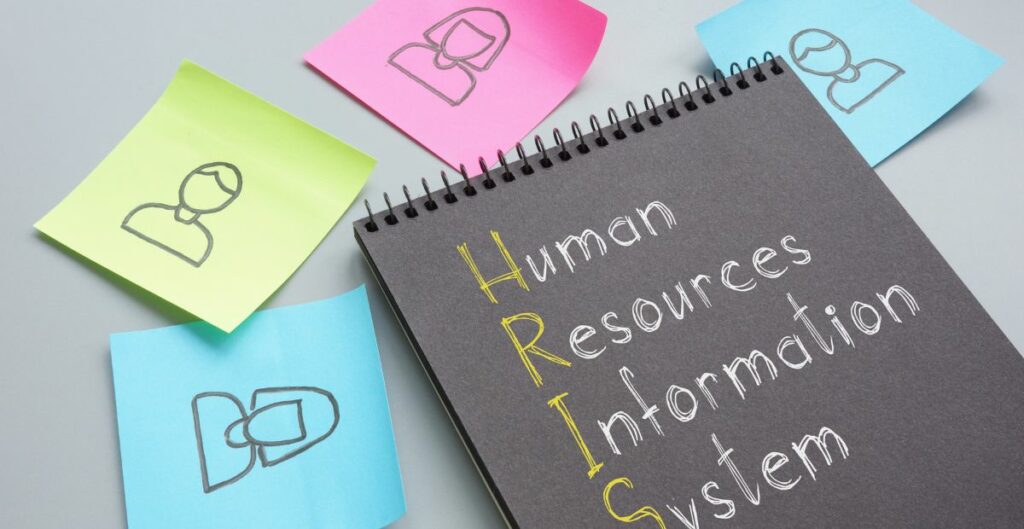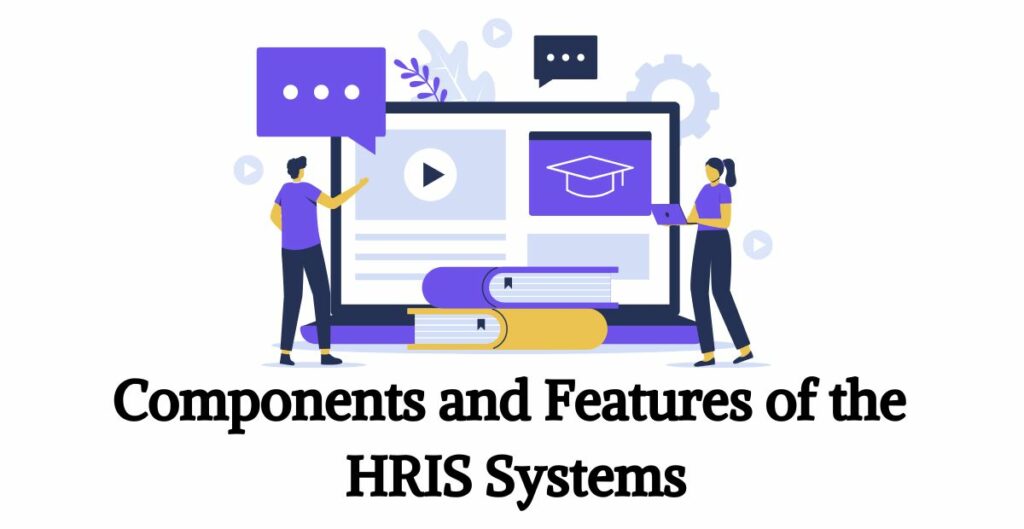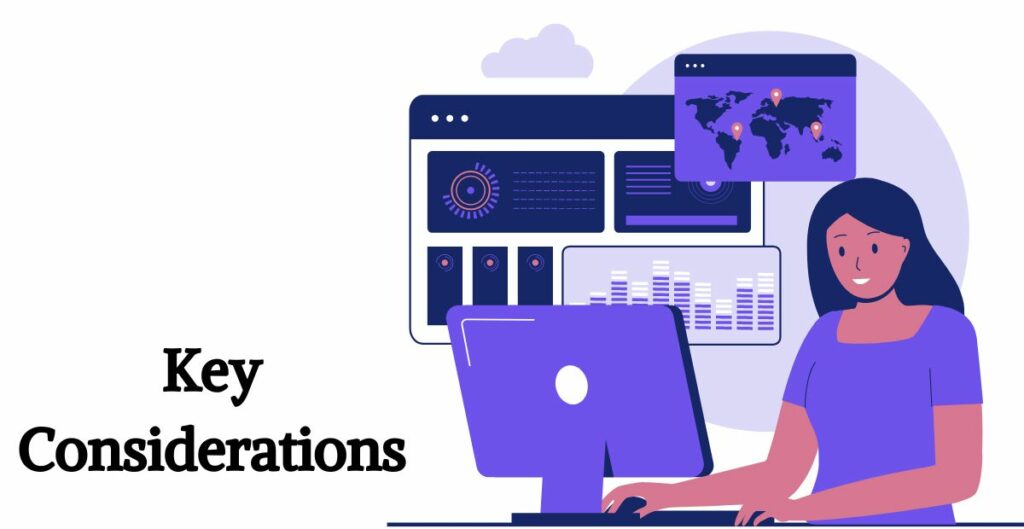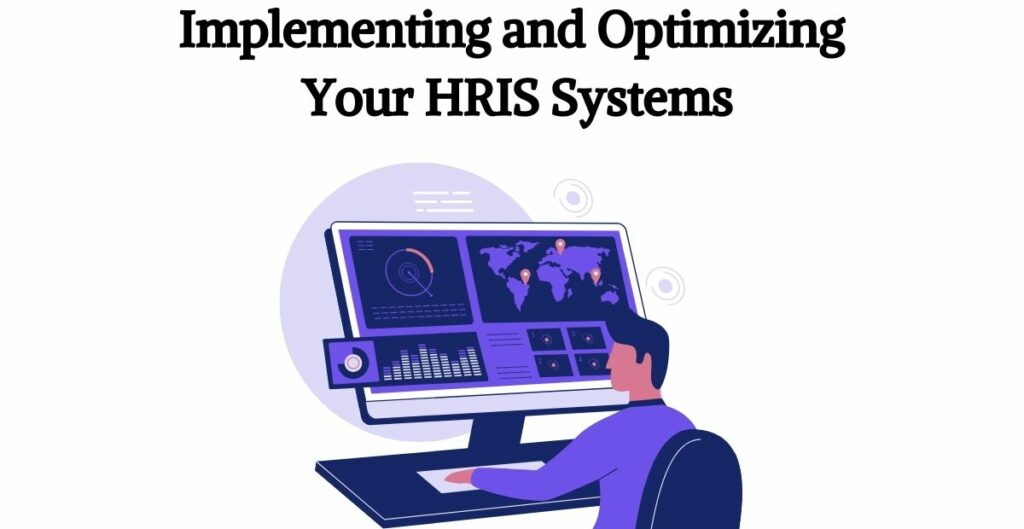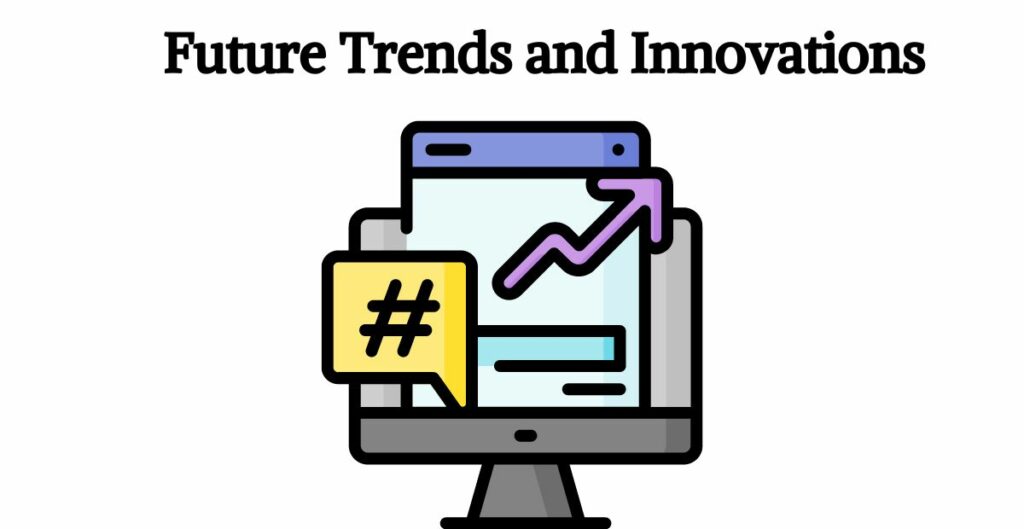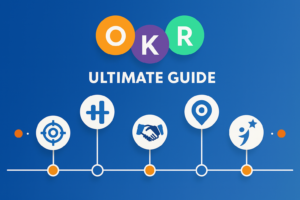Introduction to HRIS Systems
Currently, HRIS systems the environment is complex, and for companies that want to improve and refine their HR activities, an automated human resource information system is becoming a must-have. These systems are centralized platforms that administrate all this human resources staff, data payroll processing, and recruitment to talent management.
Exploring the Basics: What is an HRIS System?
At the core of the HRIS systems is the software-based tool meant to automate and make quicker and easier administrative tasks and HR processes. It is a system that records the attributes of employees such as personnel data, employment records, plan memberships, assessment ratings along other basic information. HRIS systems are platforms that let HR practitioners perform all the tasks, like hiring, onboarding, resolving issues, and separation or retirement, including the ones that are associated with the whole employee lifecycle.
Evolution of HR Technology: From Manual Processes to Digital Solutions
The emergence of HRM technology can be characterized by a major change from routine, paper-based processes that are labour-intensive to a powerful digital environment with a wide range of technologies. HR work was referred to as laborious because of the nature of tasks such as payroll processing, and time tracking which were prone to errors, among others. Nevertheless, technological improvements have provided the possibility for HR tasks to change from the traditional way to an automated way of operation, opening the opportunity for systems like Human Resources Information Systems (HRIS systems ).
Modern HRIS systems make use of contemporary technologies that include cloud computing, AI (artificial intelligence), and data analytics to improve performance, reduce the level of errors, and make decisions as well. Engaging technologies within HR functions not only improves the efficiency and productivity of the department itself but also enables the organizations to fully master their employees and thereby lead the strategic initiatives that will shape the future of the enterprise.
With this blog series, we will dig deeper into the mechanics of the HRIS systems, exploring its usage, advantages, implementation techniques, and techniques of best practices. Go with us on a trip so in the end we will be proud to say that we have found the best HR tech and know how it can be of great value to your HR department.
Components and Features of the HRIS Systems
Core HRIS Systems Functions
Among all the functions of human resource management, some are of critical importance to the operations of the organizations. These basic HRIS systems functions incorporate the essential duties involved in the efficient and effective management of the staff which is the key factor.
-
Employee Data Management
In the very front of HRIS systems operations stands the handling of employees’ data. The HR team will also be responsible for updates and audits of the employee information, including personal details, work history, qualifications, certificates, and contacts. Management of employee data helps businesses comply with legal requirements, ease communication between companies and also its employees, and enhance organizational decision-making procedures.
-
Time and Attendance Tracking
Time and attendance of employee records are required for employment productiveness management, fulfilling labor legislation rules, and employee payroll correctness verification. The time and attendance tracking system amalgamates the employee’s record on the shift start and end time, intermittent breaks, and any overtime worked. Said data helps HR departments organize schedules, provide a time track for absent employees, and allocate resources reasonably. Moreover, the systems of time and attendance tracking help business payroll by providing the most exact records of the hours a person has worked. Again, the possibility of errors decreases, and discrepancies do not happen.
Talent Management
Talent management is a strategic method of managing human resources to ensure the organization meets its long-term goals. HRIS systems support this by integrating functions such as recruitment, training, and employee development. Effective talent management not only boosts workforce productivity but also ensures the organization has the right people with the right skills in the right roles.
-
Recruitment and Applicant Tracking
Just recruitment and talent tracking are functional parts of human resource management. Recruiting consists of a finding process of people, targeting and finding competent personnel to fill empty positions in the organization. The applicant tracking systems automate the practices of recruitment by posting open positions, gathering the necessary information about the applicants, scheduling the interviews, and encouraging communication between recruiting managers and prospective candidates.
-
Performance Management
Performance management is a process that is made up of the company’s goal setting, performance assessment, feedback provisioning, and employee developmental support. It tries to upgrade individual and organizational performance as a whole by linking everybody and every team’s goals to the organization’s objectives. Organizations are enabled by performance management systems that have performance metrics, tracking the development towards goals, performance evaluation, and detecting the areas for improvement, among others. Performance management monitors work performance frequently and gives both feedback and simple rewards which enhances employees’ engagement, motivation, and career development.
Employee Self-Service Portals
Employee self-service portals pack the power to let employees handle all the tasks related to Human Resources- such as submitting their daily timesheets requesting time off and even accessing information they need without any administrative burden. These portals offer employees secure access to the HRIS systems that they need and the resources necessary to update their personal information, look at pay stubs, file for leave, or be a bit health-insured while also training and developing themselves.
-
Benefits Administration
Benefits administration is the practice of overseeing all the employee benefits provided by the organization, including health insurance, retirement plans, and so on, which are the range of benefits. Benefit systems administration ensures that the recruitment process of employees into benefits plans, insurance cover changes, adding benefits options, and passing information on employee benefits is done in an orderly manner. These systems, among other things, are designed to remain in line with government regulations and give workers access to some of the perks they want.
-
Leave Management
The process of leave management covers the policies related to workers’ absences, as well as the process of handling vacations, illness days, and other types of leave. Leave management systems organize leave requests, approvals, and tracking both in real-time mode and offline, and this enables HR departments to more easily manage employee absences with the supervision of accurate records of leave balances and entitlements. The use of these systems, among others, is imperative to ensure the regulations and leave policies are followed to the letter, and as a result, organizations can effectively plan and manage their time at work.
Benefits of Implementing an HRIS Systems
Efficiency and Time Savings
It is important to note that two great benefits can be derived from the HRMS platforms. They are time-saving and efficient. Through the application of process improvements and routine task automation, companies can realize a huge benefit in terms of saving workloads while at the same time creating more time for their employees. This phenomenon enables HR managers to approach higher-level procedures and take care of more value-added actions, therefore, humanizing the processes and enhancing the overall effectiveness.
-
Streamlined HR Processes
HRMS portals simplify HR operations by offering an integrated platform for supervising different HR department activities. From the hiring process to signing on through payroll and performance management, Systems provides one-stop solutions that eliminate outdated systems through one central HR solution. HRIS systems provide standardization, consistency, accuracy, and performance via automated and paperless workflow elimination, which enhances HR practices.
-
Automation of Routine Tasks
The HRMS systems are known for their ability to automate basic tasks and uncomplicated chores like payrolls, benefits, and leave management. Thanks to robots, the occurrence of errors in data processing is much lower, which frees the employees from the administration and ensures the observance of the regulatory requirements. Moreover, this process shortens time and reduces resources; at the same time, it also helps to acquire reliable data and satisfy the staff.
Data Accuracy and Accessibility
The HRMS systems are often at the forefront of ensuring that organizational data is accurate and accessible across the company. As the data is stored in one place and a standardized data format is used, the systems help in ensuring that accurate, updated, and available for authorized users employee information. Instant reporting and analytics give HR managers a grip on data that is updated in real-time, thus, they can be sure of making decisions based on timely and correct information.
-
Centralized Data Storage
One of the primary advantages of the HRIS systems is a centralized storage of data, where the companies can organize all the employee-related information in a safe and source location. This central repository makes all copies of data disappear, as well as triplicating the papers or tables. It is therefore possible to prevent the loss of data, its replication, or inconsistency. Consolidated records are a resource for quick information search, tracking changes in records, and validation throughout the organization.
-
Real-Time Reporting and Analytics
HRMS systems have real-time reporting and analytics assets that organizations use to attain valuable insights into their workforce’s data. Companies may conduct HR analysis by using metrics like turnover rates, employee engagement scores, and the completion rate of training as such measures let companies detect trends, discover problems, and make informed decisions to optimize HR practices and achieve better business results.
Compliance and Risk Management
-
Ensuring Regulatory Compliance
One of the basic duties of HRMS functioning is to enable companies to observe the regulations concerning respective labor laws, industry rules, and intracompany policies. Such platforms usually include compliance tools that allow HR employees to remain up to date regarding legal safeguarding and make sure that HR activities comply with the legality standards. With the help of the automated process that the HRIS systems offer, it becomes possible for companies to minimize risk by providing alerts about deadlines and instigating regulatory changes. This way, HRIS systems ensure the organization’s compliance with the legislature as it alerts them about upcoming changes or approaching deadlines.
-
Mitigating HR-related Risk
HRMS systems encompass not only automation but also in implementation of risk mitigation processes systematically. It does this by deploying a risk management system to detect potential problems and prevent them from happening through early recognition. Here, organizations can find features like risk analysis tools, audit trails, and encrypted data which will protect the privacy of their employees and make sure that leakage or other security issues will not occur. Moreover, HRIS systems have engendered some degree of uniformity for the HR-related processes and HR documentation which subsequently has resulted in errors, inconsistencies, or disputation in the HR policies. Consequently, HRIS systems create a single repository for data and introduce secure access controls which help organizations to maintain information authenticity and restriction of unauthorized data use, thereby minimizing the risk of leakage or manipulating employee data. In general, by exploiting the HRMS tools for compliance as well as risk management, companies can maintain their reputation and ensure that their HR governance works precisely. Similarly, they could prevent mistakes creation that ultimately could be regarded as a liability.
Key Considerations When Choosing an HRIS Systems
Scalability and Flexibility
Scalability and flexibility are crucial considerations for HRMS platforms to accommodate organizational growth and evolving needs effectively.
-
Adapting to Organizational Growth
HRMS systems should have the ability to scale with the organization’s increase in size and complexity. This scalability assures that the system can manage information on extra employees, dealings, and processes without compromising performance or reliability. The platform likely to be adapted is the already existing HRMS platform as the organization either increases the number of staff, additional locations, or new HR functions.
-
Customization Options
Personalization options entirely depend upon the provision of HRIS systems that is fitted to every type of business and required workplace including appropriate settings for the staff. These configurations give organizations a way to adjust the system by allowing them specific functions that comply with their unique workflows, policies, and requirements. Add-on capabilities that allow the user to create custom form fields, build workflows, create reports, and build dashboards while providing integration capability with other systems or applications. Through the provision of customization options, HRIS systems help organizations to align their HR processes, surpassing the user experience and fulfilling their strategic objectives effectively.
Integration Capabilities
Integration capabilities are vital for HRIS systems to seamlessly connect with existing systems and software, ensuring efficient data exchange and workflow automation.
-
Seamless Integration with Existing Systems
Integration of the HRIS systems should be achieved without any significant impediment much like those now used by the organization such as ERP systems, time and attendance tools, or recruitment platforms. This will integrate all data-sharing processes and eliminate the need for manual data entry. Therefore, an automatic data entry will increase the quality and speed of the employee lifecycle.
-
Compatibility with Payroll Software
Interface with payroll software is particularly a game changer for HRMS platforms that ensure the processing of payroll-related tasks is precise and timely. The successful operation of all these platforms should be based on the integration of their HRMS and payroll systems. They should automatically synchronize employee data, and take care of time-keeping, paying wages, calculating deductions and taxes, and generating payroll reports. Such connection enables continuous payroll processing, decreases the chances of errors, and allows payroll accounting procedures to be followed meticulously.
User-Friendly Interface and Support
A user-friendly interface and comprehensive support resources are essential for ensuring that both administrators and employees can effectively use the HRMS platform to perform their tasks.
-
Ease of Use for Administrators and Employees
HRMS platforms have to have simple and impressive interfaces as well as user-friendly workflows like menus, buttons, and dialog boxes that are easy to understand although they may have little or no technical knowledge at all. These results create easy-to-onboard effects, less stag time, and more users to use the developed products at an acceptance rate. To ease the administrator workload and avoid complex responsibilities, the system should be user-friendly so that administrators can configure it and manage user permissions, accessing the report tools, without facing excessive barriers.
-
Availability of Training and Support Resources
Vendors of the HRIS systems will have to make provisions for proper training and support for users as they start on the platform and tackle any other concerns or queries that may arise during day-to-day use. The available resources may take the shape of user manuals, guides, tutorials, knowledge bases, frequently asked questions, webinars as well as committed client support channels. Facilitating prompt and adaptive helpdesk serves the purpose of equipping users with the right skills to utilize the system to its full extent and leaves no room for any difficulties they could ever encounter.
Implementing and Optimizing Your HRIS Systems
Planning and Preparation
Planning and preparation are critical phases in the successful implementation of an HRIS system, involving thorough assessment, goal setting, and stakeholder engagement.
-
Needs Assessment and Goal Setting
First of all, organizations with a vision to get the service of an HRMS platform need to take a comprehensive needs analysis to know the current drawbacks, lack of standards, and the possibility of resolving them by improving the HRIS systems processes. After making this evaluation, the objectives and the targets must be made clear to be the guiding factor. Moreover, a baseline for success needs to be set as a measurement
-
Stakeholder Engagement and Buy-In
Engaging various maestro holders, such as HR practitioners, managers, employees, and IT staff, is critical to attaining their support and buy-in. Often all involved parties should be involved in the decision-making process, informed about the benefits of the new system, and consulted on their needs and preferences to create direct company goals realization.
Deployment and Training
Deployment and training involve configuring the HRIS systems, providing initial setup, and conducting comprehensive training sessions for users.
-
System Configuration and Setup
During deployment, the HRIS systems is adapted to take care of the particular organization’s specifications, workflow, and policies. This involves such things as the making of user accounts, the establishment of access rights, the configuration of particular modules, and integration into the environment already existing.
-
Employee Training and Change Management
Through workforce training and change management procedures, the system’s adoption by the employees will be orderly. As software is developed targeted at various user groups, training sessions should be customized to meet the unique needs and goals of each group to cover the main functions, features, and best practices of using the system. The change management initiatives must overcome the barriers to change, describe why this change is for the better, and support the staff as a vital component of the smooth transition.
Continuous Improvement and Updates
Continuous improvement involves monitoring system performance, gathering user feedback, and incorporating enhancements to optimize the HRIS systems over time.
-
Monitoring System Performance
Regular operational system performance monitoring should be in any organization’s plan to see whether or not there are any basic problems, bottlenecks, or any space for growth. This could take shape in the manner of reading main performance indicators, metrical usage analysis, and regular reviewing of the system to confirm that it matches the organizational desires and goals.
-
Incorporating User Feedback for Enhancements
User feedback should be regularly sought and feedback taken into account not only when making new changes to the platform but also when undertaking improvements as well This information will come in handy to know users choose the system, things that users like and dislike, and make further improvements. Through employing user feedback as the basis of all the revisions, and by making the HRMS platform always up to date, the organization can be certain that its durability and incompetence will always be in check.
Future Trends and Innovations in HRIS Systems
Artificial Intelligence and Machine Learning
Artificial Intelligence (AI) and Machine Learning (ML) are revolutionizing HRMS platforms by enabling advanced capabilities such as predictive analytics, intelligent automation, and personalized recommendations.
-
Predictive Analytics
AI and ML algorithms study massive HR data flows to detect behavioral trends and patterns thus identifying gaps, and enabling organizations to make data-driven decisions and foresee future workforce needs. Predictive analytics is a tool available for HR to predict employee turnover, identify and spot high-potential candidates, and plan out workforce strategies ahead beforehand.
-
Intelligent Automation
AI can simplify monotonous HRIS systems tasks and processes by automating such job roles as screening resumes, interview scheduling, and answering employees’ questions. Intelligent automation not only frees up time and decreases manual labor but it also automates higher-level skills and creates uniformity within HR operations.
-
Personalized Recommendations
AI-fueled recommendation engines work by supplying HR professionals, managers, and people who work for the business with recommendations that are tailored to the employees’ preferences, behaviors, and past data. These suggestions can comprise preparing for training, arranging career progression tracks, or preparing custom benefits to suit a particular individual.
Mobile Accessibility and Remote Work Support
Mobile accessibility and remote work support are essential features of modern HRMS platforms, enabling employees to access HRIS systems services and information anytime, anywhere, from any device.
-
Flexible Access to HR Services
According to the mobile-friendly interfaces and native mobile apps, people are now able to execute HR tasks with a couple of taps on their smartphones or tablets, like requesting leave, viewing pay stubs, or getting in touch with the human resources department directly. The liberation of such bottlenecks further increases employee satisfaction and productivity through the ability to manage all their HR issues through any platform at their convenience, whether one is working on-site or in a remote area.
-
Remote Work Support
The HRIS systems with remote work support intricacy features evolve the communication, collaboration, and engagement of teams, working remotely. The functionalities like virtual meetings application, group chat platforms for the team members, and monitoring employees working from a distance can be considered to maintain connection, productivity, and employee engagement with a company.
Through the use of AI and ML technologies, optimizing accessibility based on the type of device employees use, as well as presenting the employees with the remote work support necessary, companies can make their HRIS systems processes more efficient, effective, and satisfactory despite the digitalization and remote working trends.
